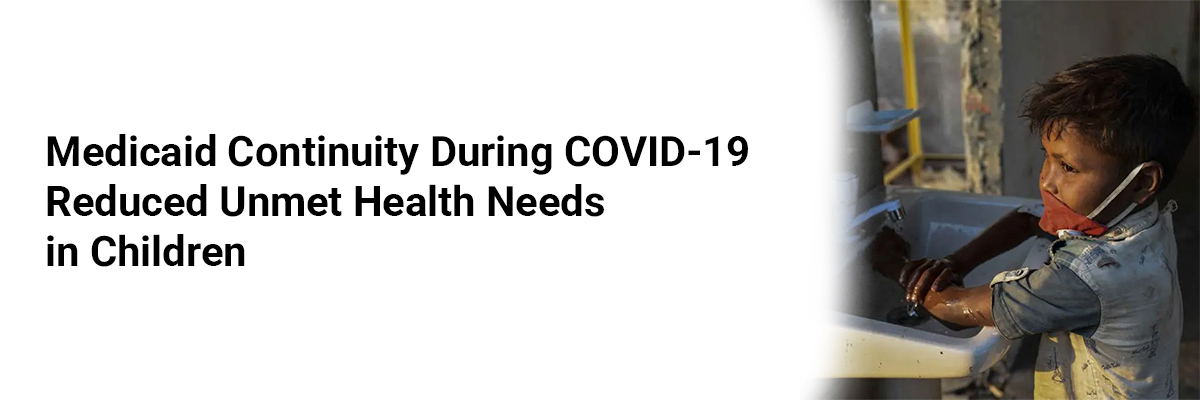
Medicaid Continuity During COVID-19 Reduced Unmet Health Needs in Children
The COVID-19 pandemic prompted critical policy responses aimed at stabilizing access to healthcare in the United States. Among them, the Families First Coronavirus Response Act (FFCRA) mandated continuous Medicaid eligibility, ensuring uninterrupted health insurance for enrolled individuals. A recent large-scale survey study published in the JAMA Health Forum sheds light on the implications of this policy for children's healthcare access, utilization, and barriers.1
Using data from the National Survey of Children's Health (2017–2022), the study evaluated over 215,000 children across 50 states and Washington, DC, employing a difference-in-differences design. It compared states that had preexisting 12-month continuous Medicaid eligibility for children with those that newly implemented it under the Families First Coronavirus Response Act (FFCRA). The findings offer valuable insights, particularly as 12-month continuous Medicaid eligibility became mandatory nationwide in January 2024.
The primary outcome revealed a statistically significant 0.7 percentage point reduction in unmet healthcare needs among children in states that newly adopted continuous Medicaid eligibility under FFCRA—representing a 21% decrease from baseline. However, no additional changes were observed in overall healthcare visits, hospitalizations, or emergency department use.
Importantly, subgroup analyses revealed amplified benefits among Hispanic and publicly insured children. Hispanic children experienced a 3.3 percentage point drop in coverage gaps, a 1.5 percentage point decline in unmet care needs, and an increase in preventive visits. Additionally, the time spent by families coordinating healthcare decreased by 3.5 percentage points. Publicly insured children also experienced fewer coverage gaps and reduced unmet needs, suggesting administrative simplification played a meaningful role in improving access.
Interestingly, the study found no overall changes in the frequency of hospital stays, emergency department visits, or problems paying medical bills, suggesting that continuous coverage may stabilize access but does not automatically translate into increased utilization—especially in the unique context of the pandemic when healthcare access was disrupted nationwide.
These findings are highly relevant today. As states continue to unwind temporary COVID-era Medicaid expansions, millions of children may face disenrollment from the program. However, under the Consolidated Appropriations Act of 2023, all states are now required to implement 12-month continuous eligibility for children—a move this study suggests will reduce unmet needs and enhance coverage stability, especially for vulnerable groups.
The research underscores the importance of seamless coverage in maintaining access to children's health and highlights the policy's potential to mitigate disparities, particularly for Hispanic and publicly insured populations. As national implementation unfolds, sustained monitoring will be essential to optimize outcomes and ensure no child falls through the cracks.
Source: Eliason EL, Nelson DB, Wood J, Strane D, Vasan A. Children’s Continuous Medicaid Eligibility During COVID-19 and Health Care Access, Use, and Barriers to Care. JAMA Health Forum. 2025;6(6):e251376.













Please login to comment on this article